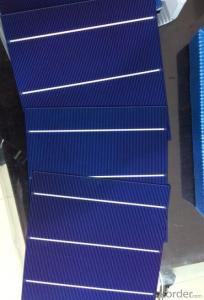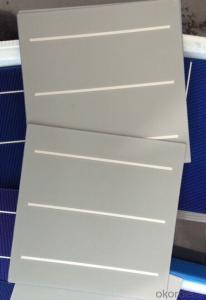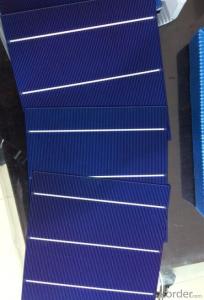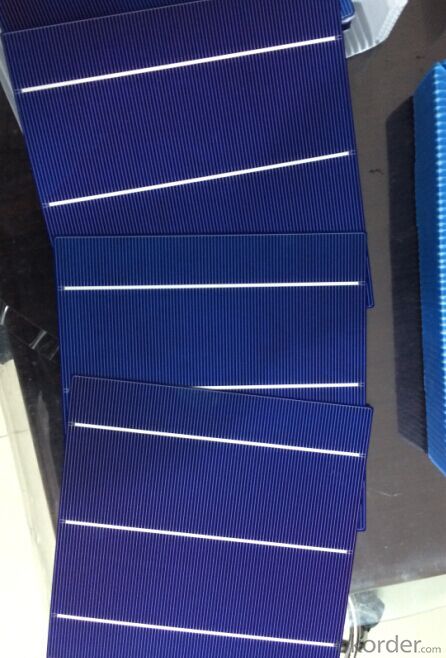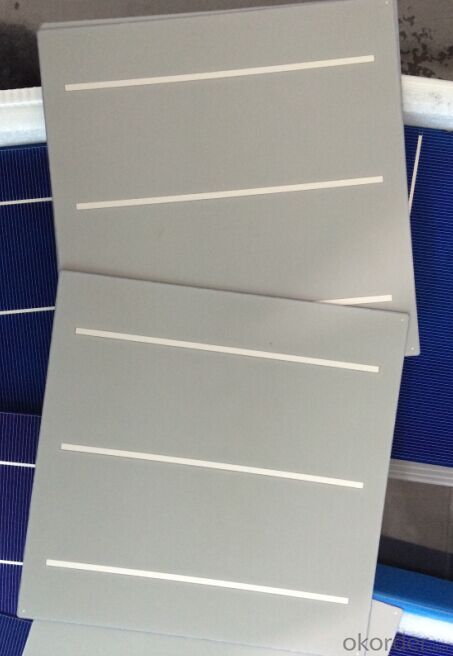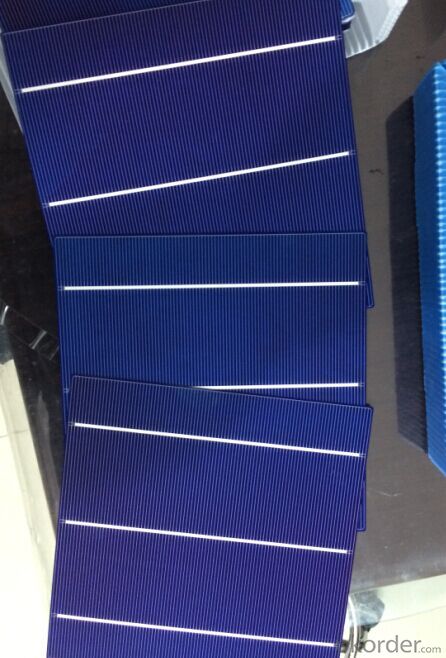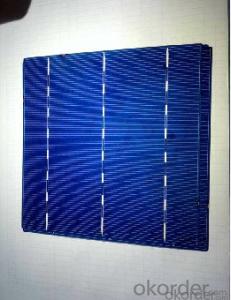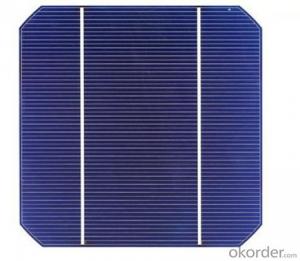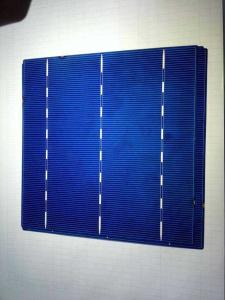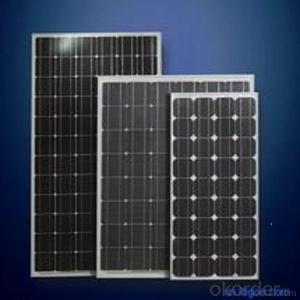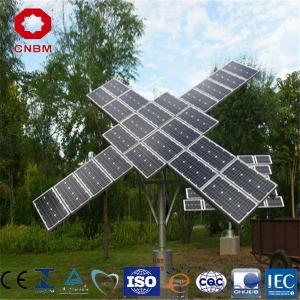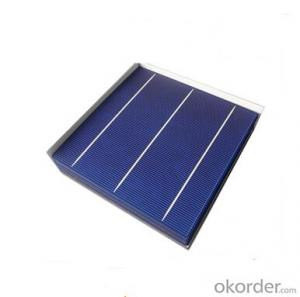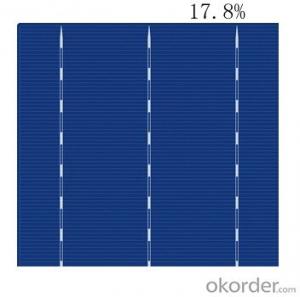Residential Solar Cells - Poly Solar Cells Lower Than 4Watt Eff Better Price
- Loading Port:
- Shanghai
- Payment Terms:
- TT or LC
- Min Order Qty:
- 30000 pc
- Supply Capability:
- 1000000 pc/month
OKorder Service Pledge
OKorder Financial Service
You Might Also Like
Electrical Characteristic
Efficiency (%) | Pmpp (W) | Umpp (V) | Impp (A) | Uoc (V) | Isc (A) | FF (%) |
17.25 | 4.197 | 0.524 | 7.992 | 0.62 | 8.458 | 80.03% |
17 | 4.137 | 0.524 | 7.876 | 0.619 | 8.353 | 80.01% |
16.75 | 4.076 | 0.522 | 7.81 | 0.617 | 8.286 | 79.73% |
16.5 | 4.015 | 0.518 | 7.746 | 0.613 | 8.215 | 79.73 |
16.25 | 3.955 | 0.515 | 7.683 | 0.61 | 8.144 | 79.61% |
16 | 3.894 | 0.512 | 7.613 | 0.608 | 8.075 | 79.31% |
15.75 | 3.833 | 0.51 | 7.534 | 0.605 | 8.058 | 78.62% |
15.5 | 3.772 | 0.508 | 7.453 | 0.604 | 8.02 | 77.87% |
15.25 | 3.771 | 0.505 | 7.35 | 0.604 | 9.997 | 76.83% |
15 | 3.65 | 0.503 | 7.271 | 0.604 | 7.989 | 75.64% |
14.5 | 3.529 | 0.499 | 7.067 | 0.604 | 7.988 | 73.14% |
14 | 3.407 | 0.499 | 6.833 | 0.604 | 7.833 | 72.01% |
Advantage Of Poly Solar Cell 156mm
1: High quality cell, Level A cell (14%—17.5%)
2.Dimensione:156*156mm Diagonal:200mm
3: Qualified certification: TUV,CE certification.
4: Warranty: five years for whole unit
Usage/Application Of Poly Solar Cell 156mm
Packaging & Delivery Of Poly Solar Cell 156mm | |
Packaging Detai | Packaging Detail:Export Carton and Pallet or under customer request. |
Delivery Detail:10-20days | |
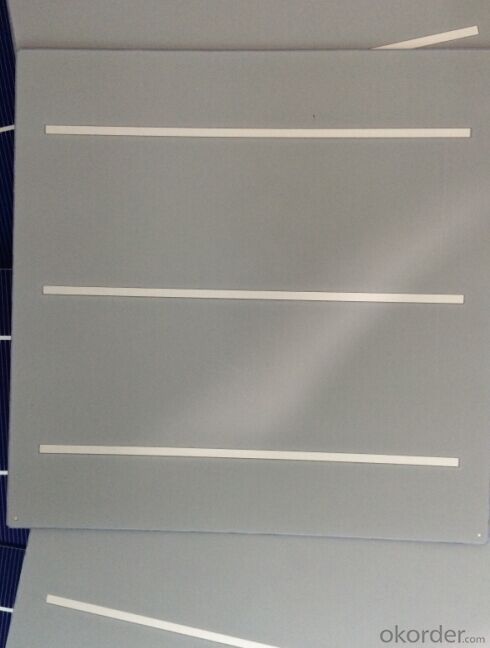
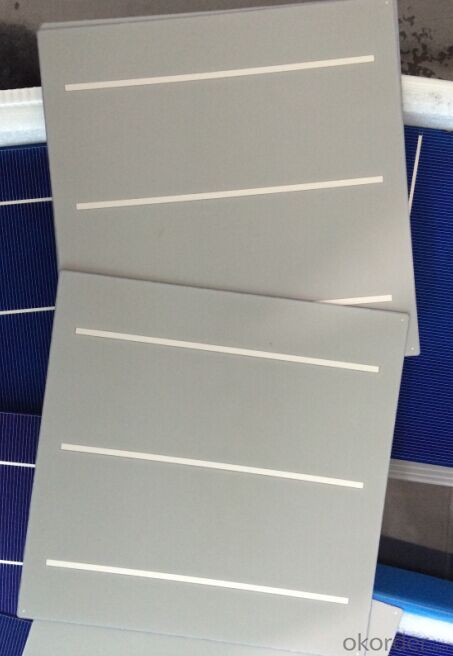
Solar cells are typically named after the semiconducting material they are made of. These materials must have certain characteristics in order to absorb sunlight. Some cells are designed to handle sunlight that reaches the Earth's surface, while others are optimized for use in space. Solar cells can be made of only one single layer of light-absorbing material (single-junction) or use multiple physical configurations (multi-junctions) to take advantage of various absorption and charge separation mechanisms.
- Q: How many solar cells are there in a solar panel?
- Maybe 15 or more.
- Q: What is the role of solar cells in powering remote surveillance systems?
- Solar cells play a crucial role in powering remote surveillance systems by harnessing the sun's energy and converting it into electricity. This renewable energy source allows surveillance systems to operate in remote locations without relying on traditional power grids or expensive fuel sources. Solar cells provide a sustainable and reliable power supply, ensuring continuous operation of surveillance equipment, including cameras, sensors, and communication devices, even in areas without access to electricity.
- Q: How do solar cells affect the grid?
- Solar cells affect the grid by generating electricity from sunlight and feeding it into the grid, reducing the reliance on traditional power sources. They contribute to a more sustainable and decentralized energy system, helping to reduce greenhouse gas emissions and dependence on fossil fuels. However, their intermittent nature can pose challenges for grid stability and require additional infrastructure investments for integration.
- Q: Can solar cells be used for powering schools?
- Yes, solar cells can be used to power schools. Solar energy is a renewable and sustainable source of power, and installing solar panels on school rooftops or grounds can generate electricity to meet the energy needs of schools. This can significantly reduce the reliance on fossil fuels and decrease carbon emissions, making it an environmentally friendly solution. Additionally, solar power can provide a reliable and consistent energy source, especially in sunny regions, ensuring schools have a stable power supply.
- Q: What is the impact of solar cells on wildlife?
- The impact of solar cells on wildlife is generally minimal and beneficial. Solar cells produce clean energy without emitting harmful pollutants or greenhouse gases, reducing air and water pollution that can negatively affect wildlife habitats. Additionally, solar energy infrastructure typically occupies a small footprint and can coexist with wildlife habitats, allowing animals to continue their normal behaviors. However, there have been some concerns about the potential for bird collisions with solar panels and the disruption of desert ecosystems during large-scale solar installations. Overall, compared to traditional energy sources, solar cells have a much lower impact on wildlife and contribute to a more sustainable future.
- Q: Can solar cells be used to power medical devices?
- Yes, solar cells can be used to power medical devices. They can convert sunlight into electricity, providing a sustainable and renewable source of power for various medical devices such as portable medical monitors, hearing aids, insulin pumps, and even implantable devices. Solar-powered medical devices are particularly useful in remote or resource-limited areas where access to electricity is limited, ensuring continuous and reliable power supply for critical healthcare needs.
- Q: How do solar cells perform in areas with high levels of chemical pollutants?
- Solar cells may not perform optimally in areas with high levels of chemical pollutants. The presence of pollutants in the air can reduce the amount of sunlight reaching the solar cells, thereby decreasing their efficiency and power output. Additionally, chemical pollutants may accumulate on the surface of the solar cells, leading to the formation of a layer that can block sunlight absorption. Regular cleaning and maintenance of the solar cells becomes crucial in such areas to mitigate the impact of chemical pollutants on their performance.
- Q: I have a turnkey solar power project starting in 6 months, now we are searching the market in south China to find the best solar cells manufacturers. Any professional suggestion or recommendation?
- As one of the manfacturers based in China who can provide most varieties of batteries, majored in rechargeable batteries: Cylindrical lithium-ion battery, lithium polymer, lithium iron phosphate, NI-MH, nickel cadmium, nickel zinc batteries; Disposable lithium batteries: Lithium manganese (3.0V).
- Q: Can solar cells be used to power large industrial facilities?
- Yes, solar cells can be used to power large industrial facilities. With advancements in solar technology and the availability of large-scale solar installations, solar power has become a viable option for industrial-scale electricity generation. By deploying a sufficient number of solar panels, along with efficient energy storage systems, it is possible to meet the energy demands of large industrial facilities and reduce their dependency on conventional power sources.
- Q: Can solar cells be used to power remote disaster response systems?
- Yes, solar cells can indeed be used to power remote disaster response systems. Solar cells generate electricity by converting sunlight into energy, making them an ideal source of power in areas where conventional electricity infrastructure is unavailable or disrupted due to a disaster. By harnessing solar energy, remote disaster response systems can operate efficiently and sustainably, providing essential services such as communication, lighting, medical equipment, and other critical functions. Additionally, solar cells are portable, durable, and can be easily deployed in remote locations, making them a reliable and practical solution for powering disaster response efforts.
Send your message to us
Residential Solar Cells - Poly Solar Cells Lower Than 4Watt Eff Better Price
- Loading Port:
- Shanghai
- Payment Terms:
- TT or LC
- Min Order Qty:
- 30000 pc
- Supply Capability:
- 1000000 pc/month
OKorder Service Pledge
OKorder Financial Service
Similar products
Hot products
Hot Searches
Related keywords
